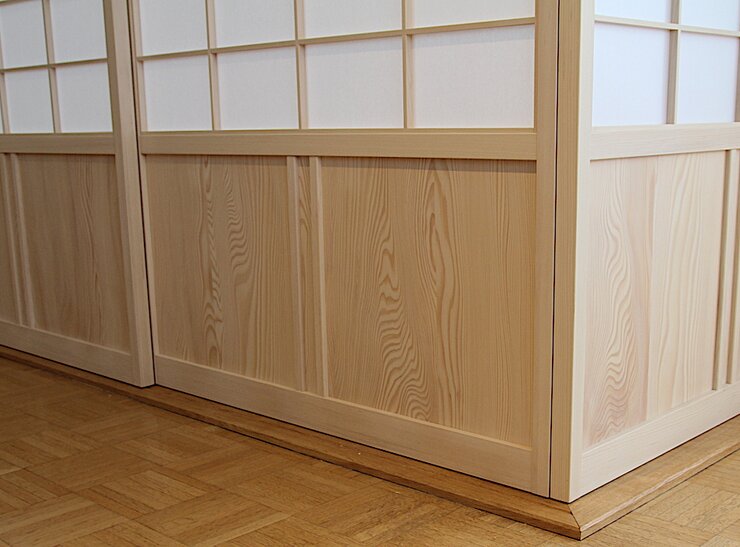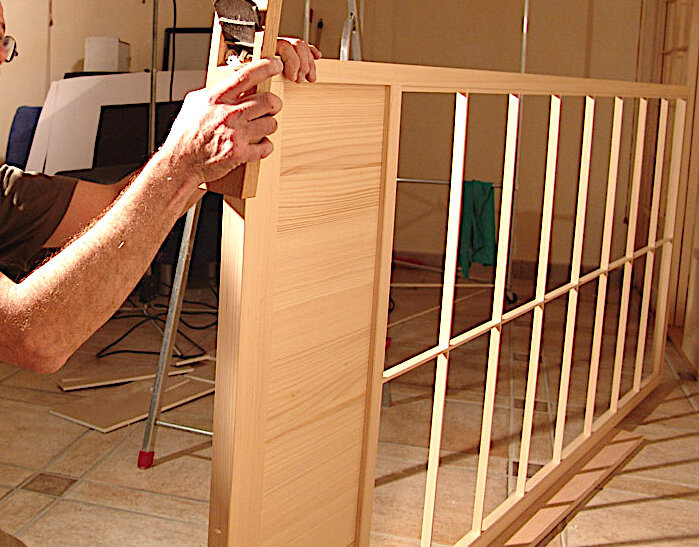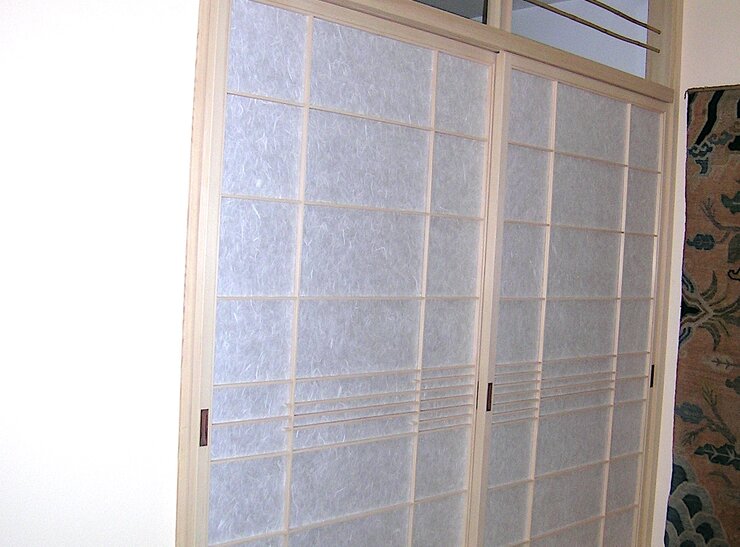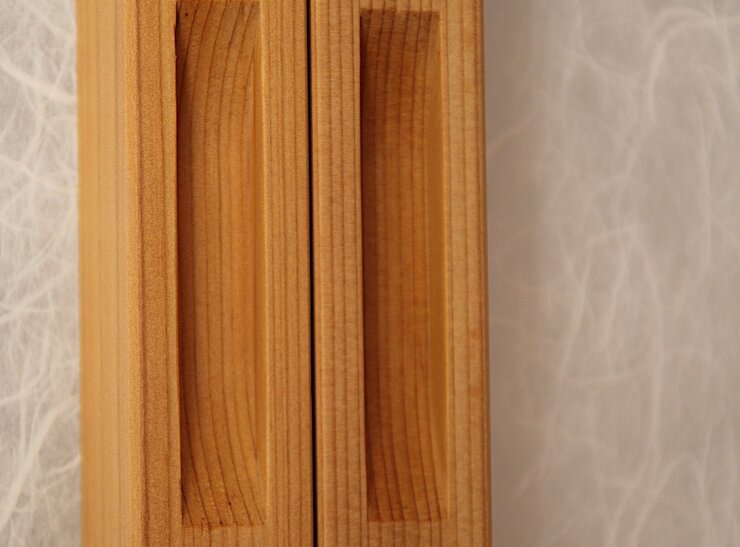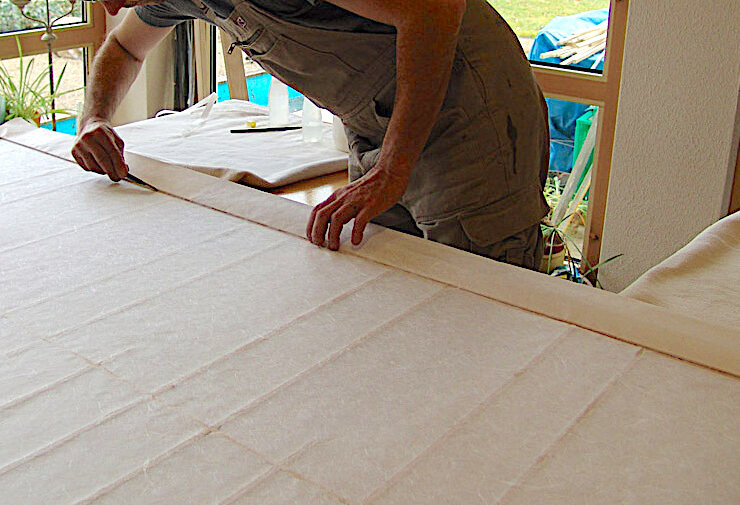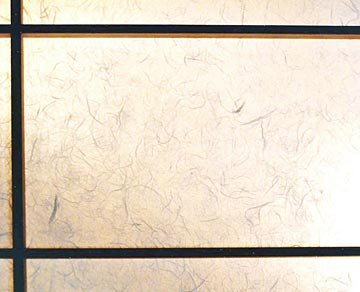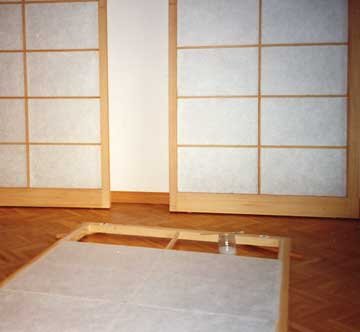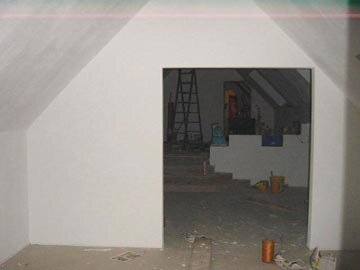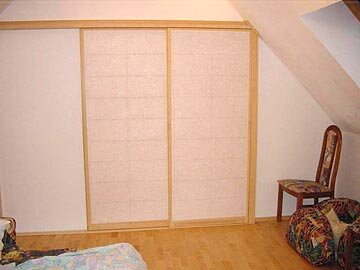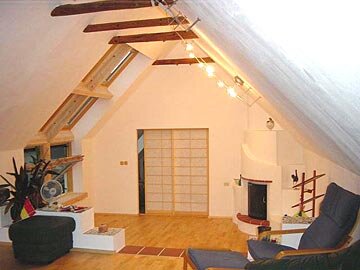
Shoji: Build Your Own Japanese Sliding Doors - What You Need
WOOD

(In the picture on the left, you can see my wood supplier.) Shoji can theoretically be made from almost any available type of wood, but I rely on the expertise of my predecessors and exclusively use fir wood, which is regionally available in the highest quality. This greatly reduces long transport routes and additional environmental impact. My ongoing inventory includes about 5-10 cubic meters, making it easy to select the best wood for the key components of Shoji and Fusuma—these are the frame parts and lattices. Less optimal pieces of this valuable material are used for structural purposes.

Selecting the right wood is crucial to prevent functional issues caused by warping. Wood is a living material that reacts to fluctuations in humidity (summer-winter). Assessing the quality of boards cut from trees is highly demanding and requires decades of experience. The construction allows for minimal raw wood consumption. In Japanese rooms, even “scraps” are used—pieces that would typically be discarded in a conventional workshop. Even 30 cm long pieces find their use. Disposal of my installations is environmentally safe due to the use of eco-friendly materials (wood, finishes, Shoji paper, rice glue). Simply put, this results in "healthy" products.
Seamless Integration of Lattices into the Frame
This is how traditional corner joints and lattices are fitted into the frame.


SURFACE
I generally offer two types of surface finishes:
A beautiful, natural wood sheen is achieved by hand-planing, a traditional Japanese technique.
For a “European finish,” I work exclusively with natural-based products, which are not only safe but also prevent static build-up (less dust on the lattices).
The treatment involves oils, waxes, or colored shellac patina (from Livos and Naturhaus).
Of course, I pay special attention to the needs of allergy sufferers (e.g., linseed oil, orange terpenes, beeswax).
CONSTRUCTION AND DETAILS
There are different options for Shoji sliding doors.
Traditionally, Shoji slides in wooden tracks at the top and bottom. I usually use Japanese rollers at the bottom and the original sliding mechanism at the top.
Installing Shoji later often results in a threshold due to the track rail. However, this allows me to perfectly adjust the installation to the conditions. A suspended version with European sliding door fittings is also possible, though the metal tracks remain visible.
Once installed, Shoji is surprisingly robust. Damaged paper panels can be easily replaced.
The track rail is made from hardwood (maple, beech, oak), making it durable and resistant to wear.
Precise adjustment of wall joints to accommodate uneven masonry is important to me and makes a difference. Silicone or similar fillers are only used in exceptional cases when structurally necessary.
Seamless Integration of Lattices into the Frame
Hikite (recessed handles) are made from various types of wood, such as beech, maple, or walnut. This material often comes from workshop scraps. I also use recessed handles purchased in Japan.

The track rail is made from hardwood (maple, beech, oak) and is durable.

Seamless wall connections to uneven masonry without using silicone.



Corner joints are crafted in the traditional Japanese style. There are no exposed crossbars like in many industrial products.


Recessed handles are either milled into the frame or set in hardwood. See image 1 (left: front view, right: back view; the Shoji’s lattices are also visible).
Recessed handles can also be made from different types of wood or finished with different oils or colored lacquers.
COVERING



Shoji is covered with Washi (Japanese paper), available in various types distinguished by composition, thickness, and texture.
Other materials can also be used, such as glass, fabric, plastic, or coated papers specifically designed for use in wellness areas.
SELF-ASSEMBLY AND COVERING



For DIY enthusiasts, it’s possible to receive custom-fit Shoji components for self-assembly.
The construction allows for adjustments of about 3 cm in measurement tolerances.
Over the past 20 years, customer-measured installations have never resulted in unsuccessful assembly.
"Dear Mr. Bauer, attached are photos of the Shoji door. It was easy to install as all the parts fit together perfectly. Thank you very much. Best regards, Dietmar Rath, Vienna"
Before: Wall opening in the attic studio
After: Close-up of Shoji after self-installation
Finished Shoji - Room effect
Careful selection and processing of the wood guarantee that there will be no functional impairments.
Of course, I cannot provide warranty coverage for wear and tear during the warranty period, nor for damage caused by force or improper handling.

